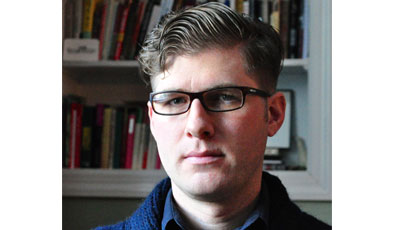
In a simpler time, back when Silicon Valley still produced pears and apricots and the notion of putting a man on the moon seemed as far off as the moon itself, the livelihoods of middle-class men and women were defined by their craft. There were apprentices and journeymen and masters of craft who survived and sometimes thrived on skills like basket weaving, barrel making, embroidery, metalworking, pottery, woodworking, and glassblowing to name a few. In his latest book, Associate Professor of Sociology Richard Ocejo contends that despite modern developments like the Internet and the digital economy, some crafts are alive and well due to a resurgence of interest in making things well and doing it by hand.
In Masters of Craft: Old Jobs in the New Economy, Ocejo zeroes in on four distinct crafts — barbering, butchering, bartending, and distilling — and sets out to understand why they are more popular today among employment-seekers and consumers than they have been in nearly a century.
While working in crafts had never died out completely, Ocejo sets out to discover why increasing numbers of middle-class individuals are rejecting traditional employment opportunities in favor of jobs that might otherwise be characterized as below their skill level.
“I was surprised,” he said. “They were all people who had college degrees, they were well-educated, some had worked in other professions and had other careers, but they all chose to work these jobs.”
Ocejo became fascinated in craftwork in 2007 when he noticed two new cocktail bars on the Lower East Side that didn’t quite fit into the neighborhood. “I was blown away by what was going on inside of them,” he said. “It was dark and there was jazz playing, fruity aromas in the air, and bartenders using really meticulous techniques to make drinks that all had weird ingredients and names.”
Studying the techniques and motivations of craft bartenders and the cocktails they made eventually led Ocejo to the world of distilling, where he became introduced to a cohort of passionate creators at Tuthilltown Spirits in upstate New York. Through an internship there, Ocejo observed young, enthusiastic distillers taking great pride in what only recently was referred to as a manufacturing job. The difference is that unlike factory-made spirits, at the places Ocejo studied, “human input is an essential part of every step of the process.”
By studying bartenders, butchers, and barbers, Ocejo concluded that craft workers are often far more satisfied in their current vocations than any previous jobs they held.
According to Ocejo: “A lot of them latched onto the idea that work should be something that is meaningful and fulfilling, that it should not just be for material reward but should have some psychological component. They didn’t see themselves fitting into the more typical paths for well-educated middle-class folks.”
Working with their hands to create products that have come to be known as authentic and individualized, craft workers have helped evolve a strong consumer demand for such products, albeit in mostly urban areas.
As he summarized: “It wasn’t so much about serving drinks as knowing what goes into the drinks. It wasn’t about mass-producing a spirit, but understanding why that spirit was authentically made. It was not so much about quickly cutting hair as it was about cultivating a certain style and conveying a sense of masculinity. Cutting meat wasn’t about being in food retail, it was promoting this philosophy of what is ethical, sustainable, good meat.”
Ocejo also observed a tension between this new class of educated craft workers and those who held such jobs before the “craft revolution” rose to prominence. In many cases, jobs at craft businesses are not accessible to the average bartender or barber if they lack the cultural understanding to appreciate why making the product “authentically” is significant. Further, if they cannot communicate the notion of authenticity to the consumer — explain where the beef came from or why a drink is being mixed a certain way — they don’t fit into the craft economy.
“If you’re in central Ohio, a former manufacturing capital, these opportunities are really not there. The sense of aesthetics that is undergirding these jobs really doesn’t exist,” Ocejo noted. “People who are closer to scarcity have less freedom or will to seriously intellectualize what they consume.”
Ocejo said workers in the craft economy are not displacing traditional jobs as much as developing a new industry. And what the educated cocktail master has in common with the disaffected Ohioan factory worker is that both share the end goal of carving out a middle class living that gives them enough to survive while offering some kind of psychological satisfaction.
“People are searching for something authentic, something real. I don’t see where this ends — it will keep expanding,” Ocejo said.
Masters of Craft: Old Jobs in the New Economy was published in April by Princeton University Press.
Interview/blog: https://indoorvoicespodcast.wordpress.com/



